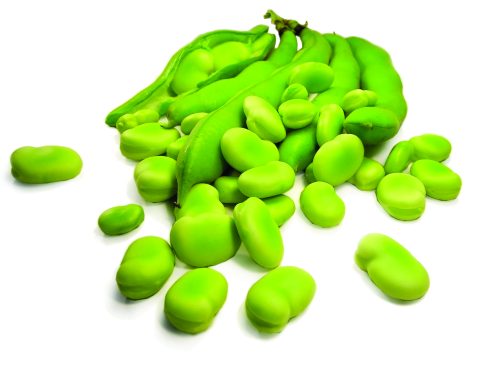
The hardy broad bean plant can grow through winter to emerge as one of the early spring crops.
As the beans first have to be removed from the pod, then from their outer shell, preparation of broad beans can be finicky but the creamy texture, nutty flavour and versatility of this vegetable is worth the effort. They are called broad beans due to the edible large flat, nearly round inner beans. They are also known as fava beans (in the US), pigeon beans, horse beans and Windsor beans.
Buying
Choose bright-green crisp undamaged pods. About half the weight of broad beans is in the pods, so keep that in mind when satisfying recipe quantities.
Storing
In a cool, dry place, broad beans in their pods will keep for two or three days, and for up to a week in the fridge.
Nutrition
Low in energy, broad beans are a good source of fibre, niacin (vitamin B3) and folate as well as adding protein and non-haem iron to our diet.
Using
Remove beans from their pod, then steam beans for about two minutes. Rinse in cool water then drain. The edible bean should now slip easily out of its covering. Drizzle these beans with olive oil, salt and lemon then eat. Or add to this fresh herbs (such as basil or mint), leafy greens, cherry tomatoes (when in season) and a complementary cheese such as feta, mozzarella, ricotta or haloumi to make a delicious salad. Similarly podded broad beans also add bite to risottos, pasta, meat stews, soups and mash. For an Italian-inspired dish, mash podded beans, stir in lemon juice and use to top bruschetta.
Tip: Don’t forget frozen broad beans — available year-round and a great standby from the freezer.
www.healthyfood.com










